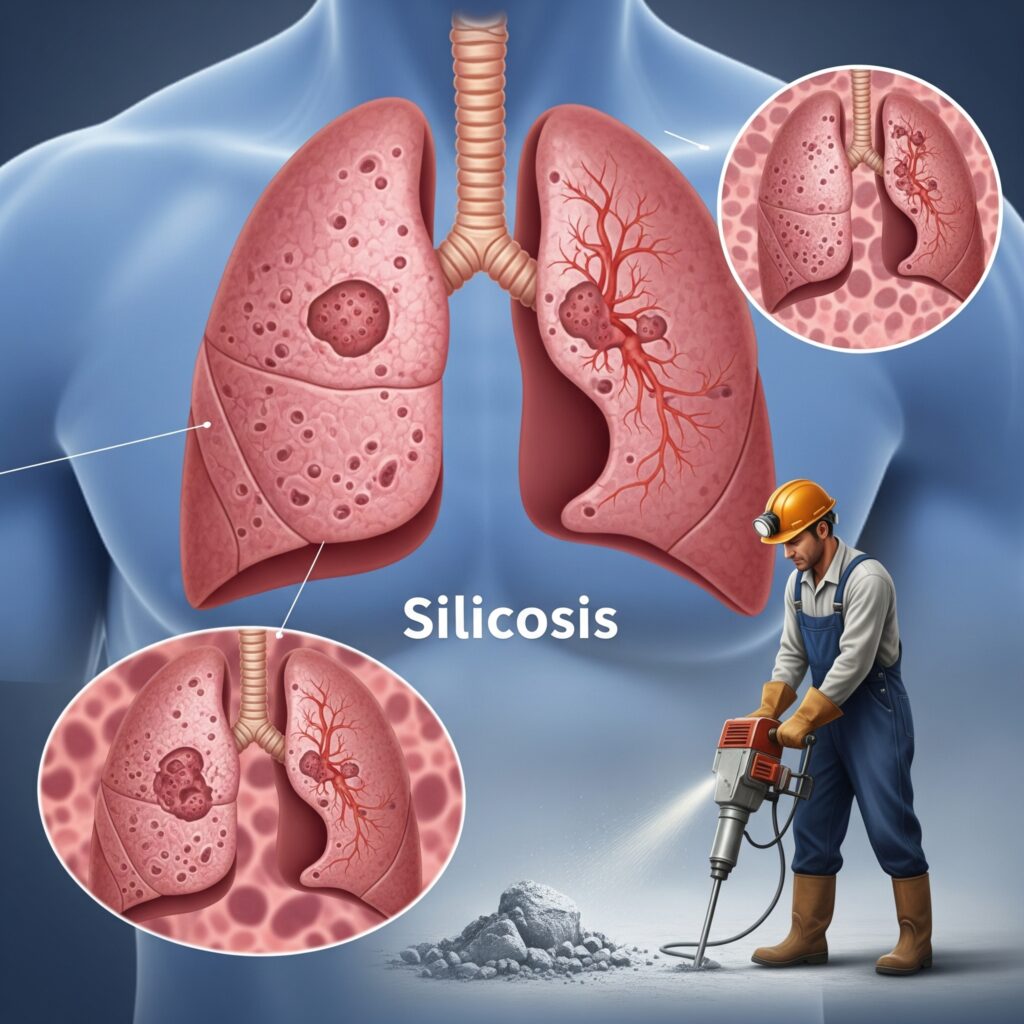
Accidents related to workplace safety violations happen every day across America. However, some workplace risks are more subtle and lack adequate attention. Silicosis, a little-known but deadly cause of lung disease, is one such risk that has been overlooked yet impacts thousands of workers. A recent opinion piece in The Atlantic, bylined by former OSHA and Mine Safety and Health Administration officers, offers insider insights into the largely unknown risks to the public.
Silicosis is a serious and often progressive lung disease that’s caused by inhaling fine silica dust particles over time. Silica is found in rock, sand, and soil, and when these materials are cut, drilled, or crushed—like on a construction site. The dust can become airborne and easily inhaled by workers day after day.
In California more than 200 workers crippled with impacts of unsafe workplaces have filed suit. However, this is just one pocket that banded together to fight for their health.
As awareness for silicosis rises, we are hearing from more people struggling with various lung conditions.
In the 1970s, Locks Law Firm was faced with a similar challenge as illness related to asbestos began to be known, and the firm proved that the industry had been aware of the dangers for decades. Over the past several decades, we have fought for hundreds of people impacted by asbestos. We played a key role in Agent Orange and Fen-Phen cases, which also had thousands falling ill. The Locks Law team is now working on benzene cases, with the largest-ever verdict this past year for $725M against ExxonMobil.
With our decades of experience in these sorts of complex litigation cases, we are using our experience to make an impact in silicosis. We have just begun work on this area and are eager to offer clients counsel and support as they face unforeseen health challenges.
A silicosis diagnosis can be incredibly frustrating because it is entirely preventable. In fact, the dangers of silica dust have been known and documented for centuries.
As noted in The Atlantic article, co-authored by the former head of the Occupational Safety and Health Administration (OSHA), there are clear standards to reduce silica exposure. Employers are required by law to take protective measures that include: using wet cutting methods and ventilation systems to limit dust, providing and maintaining proper respirators, educating workers about silica hazards, enforcing safe hygiene practices (such as showering and changing clothes after exposure), and keeping equipment properly maintained and safe to use.
We are eager to work toward greater worker knowledge of the risks and protective measures to take at your workplace. If you or someone you know needs advice or counsel, please do not hesitate to reach out.
About Silicosis
Silicosis is a serious and often progressive lung disease that’s caused by inhaling fine silica dust particles over time. Silica is found in rock, sand, and soil, and when these materials are cut, drilled, or crushed—like on a construction site, for example—the dust can become airborne and easily inhaled by workers day after day. Without proper safety protocols and protections in place, the dust generated by these activities becomes a silent but dangerous threat.
Once silica dust settles deep inside the lungs, the particles cause inflammation and eventually scarring (called pulmonary fibrosis), making it increasingly difficult to breathe. In severe cases, patients may require oxygen therapy or other respiratory support. If left untreated, silicosis can also lead to other serious health complications, including lung cancer, tuberculosis, chronic bronchitis, autoimmune disorders, and kidney disease.
Silicosis often takes years to develop after occupational exposure to RCS—sometimes it takes 10, 15, or even 20 years—though more severe forms can appear sooner. This is especially true for workers who cut and polish engineered stone, which is popular for countertops. That’s because engineered stone often contains higher concentrations of silica than natural stone and can release dangerous levels of dust when handled.
Common symptoms may include persistent coughing, shortness of breath, chest pain, fatigue, unexplained weight loss, and needing help to breathe. Sound familiar? Don’t brush it off—get medical attention right away, and consider speaking with a legal professional.
Check out these links for more about silicosis:
Hazard Analysis: Lessons Learned And Initial Findings From Osha’s Emphasis Program On Silica In Engineered Stone. (May 5, 2025) https://www.osha.gov/sites/default/files/publications/silica-hazard-alert.pdf
OSHA: Silica, Crystalline Overview. (May 5, 2025) https://www.osha.gov/silica-crystalline







